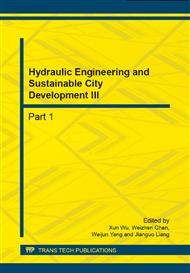p.942
p.946
p.952
p.956
p.961
p.966
p.970
p.978
p.982
Research on Carbon Calculation of Rural Roofing Materials
Abstract:
Based on the present situation of village building adopting the internationally recognized life-cycle theory, the life-cycle calculation model of carbon emission of rural roofing materials was put forward , the calculation boundary of carbon emissions was divided and the calculation parameters and calculation formula was determined. The result shows that: under reasonable assumptions, applying life cycle theory to carbon calculation of rural roofing materials is feasible. The rural roofing materials industry by improving production process to reduce energy consumption and selecting raw material in localization as far as possible can significantly reduce carbon emissions.
Info:
Periodical:
Pages:
961-965
Citation:
Online since:
September 2014
Authors:
Price:
Сopyright:
© 2014 Trans Tech Publications Ltd. All Rights Reserved
Share:
Citation:


